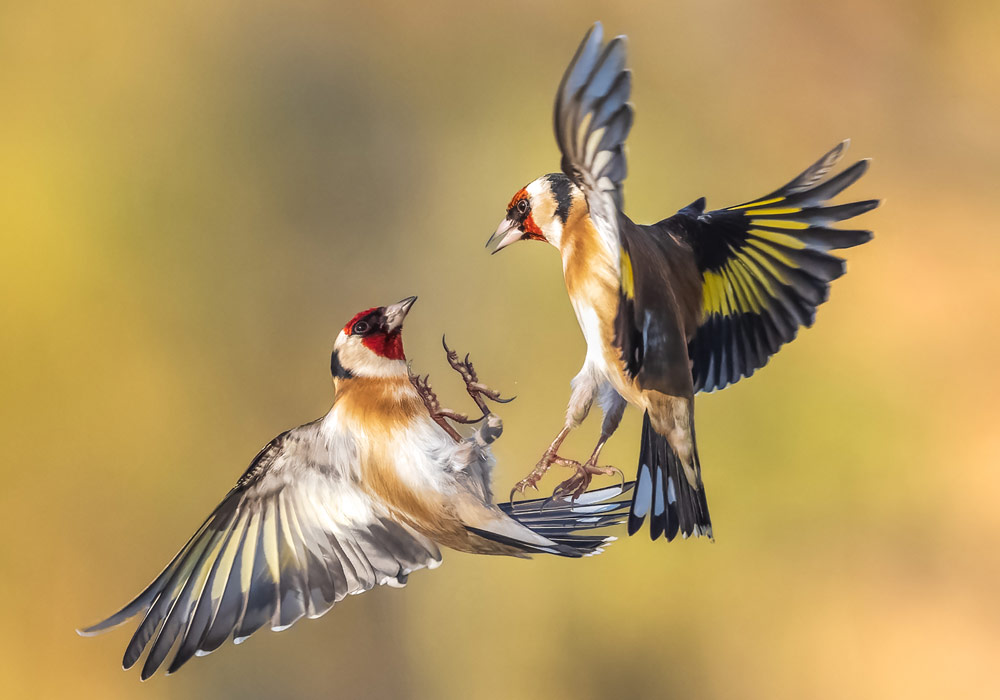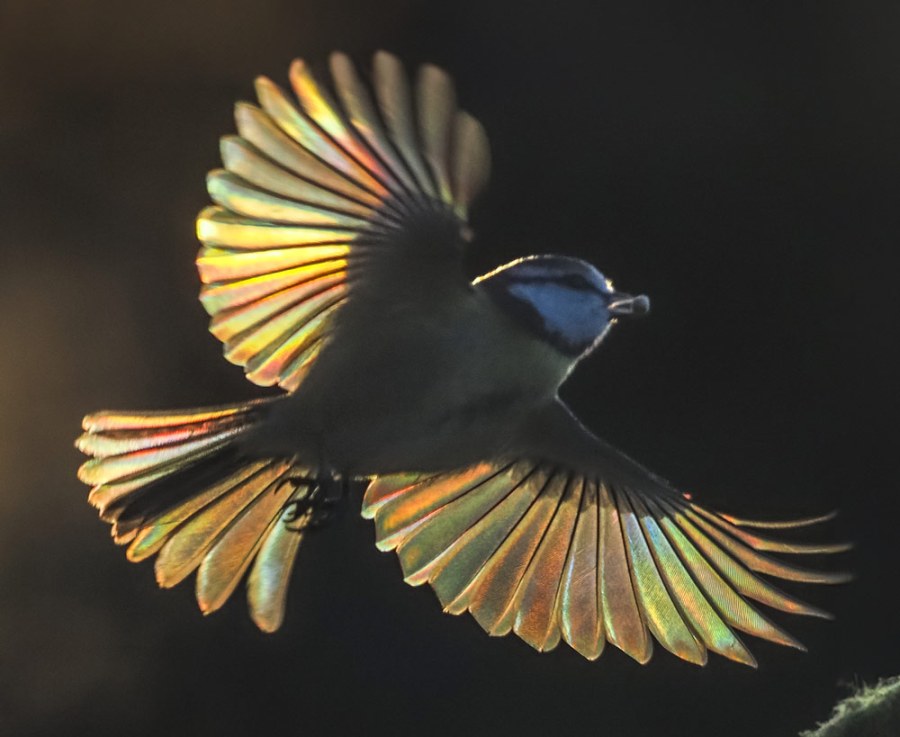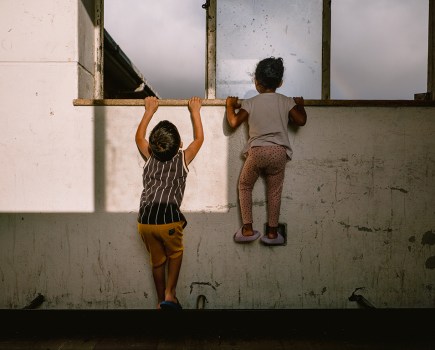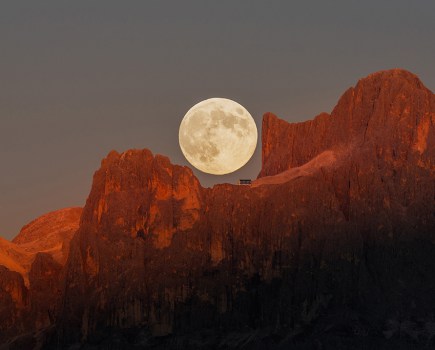Bird and wildlife photography is massively popular, so how do you make bird images in particular stand out? Regular AP contributor, Andrew Fusek Peters, has managed it, but anyone looking for shortcuts or easy fixes will be disappointed.
For Andrew it comes down to sheer hard work, putting in the required time to perfect his craft and being prepared to get up at all hours to ensure the best lighting conditions. It’s also about having the best possible equipment, which for Andrew, comes down to the OM System OM-1 high-end mirrorless camera, with its Pro Capture mode.
When you press the shutter button halfway, the OM-1 begins buffering a running series of photos at 120fps. Andrew put this to great effect recently, when he managed to capture early morning light reflected through a blue tit’s wings, creating a beautiful rainbow effect. He describes the image as ‘ultra rare’ and tells us more about how it came about below.
Realising the vision of rainbow wings
‘I have been shooting garden birds in winter at home for seven years now – I sit in the kitchen, with seeds hidden in branches and other set-ups, always putting the well-being of the bird first,’ recounts Andrew, from his home in the Shropshire countryside. ‘My interest is capturing birds fighting, and in flight. One morning a few weeks ago, just after dawn, I was photographing a ‘boring’ blue tit – I say boring as I wanted a greenfinch or one of the rarer birds! – and as its wings spread out, I captured this wonderful light reflected through them.

Andrew at home in Shropshire
With Pro Capture on the OM-1, I was able to shoot at 50 frames per second with AF, and buffered about 70 photos on that morning. This feature is implemented particularly well on the OM-1, and my hit rate is now much higher than it was with other cameras.’
Swearing by Pro Capture
Andrew was blown away by the rainbow/stained glass effect on the blue tit’s wings, and soon realised he had a unique capture. ‘You can only hope to capture this effect for a few minutes when the sun is at a particular angle. There’s a guy who’s done this with hummingbirds, and somebody else in Wales who’s done it with garden birds, but I can’t find anyone else in the world who’s done it with blue tits.’ For this particular image, Andrew shot a F/4 on a 300mm F/4 Olympus lens, with a shutter speed of 1/2500th of a sec and an ISO of 500.

Other subjects showing the rainbow effect include greenfinches and robins – watch out for a special chapter in Andrew’s new book on garden wildlife
And there’s more, as Andrew explains. ‘I have about 40 images showing this effect so far, and am building a portfolio with other subjects. They will appear in the final chapter of my new book on garden wildlife, which follows Butterfly Safari, my last publication, which was released in May. This chapter is still a work in progress, and I hope to get two birds fighting with the rainbow effect… I’ve got close but it’s not quite good enough.’
Rainbow wings go global
Once Andrew’s press agency began sharing the blue tit image, it quickly appeared in the daily papers as well as on the home page of the BBC website – quite an achievement for a bird photography story, when you consider everything else that is happening in the world during this festive week. ‘I love the fact that blue tits are common birds and nobody has quite photographed them like this before,’ Andrew concludes.

Andrew hopes to capture the rainbow effect on birds fighting in his back garden, as with these bolshy goldfinches
The huge media interest in the blue tit image is a good way to round off the year for Andrew, as 2023 brought mixed fortunes – back in the summer, he lost the tip of his finger in a freak (and very painful) accident involving a tripod.
Further reading
How to capture fast-moving birds and animals
Low-light wildlife photography tips
Bird photography with the OM System OM-1







